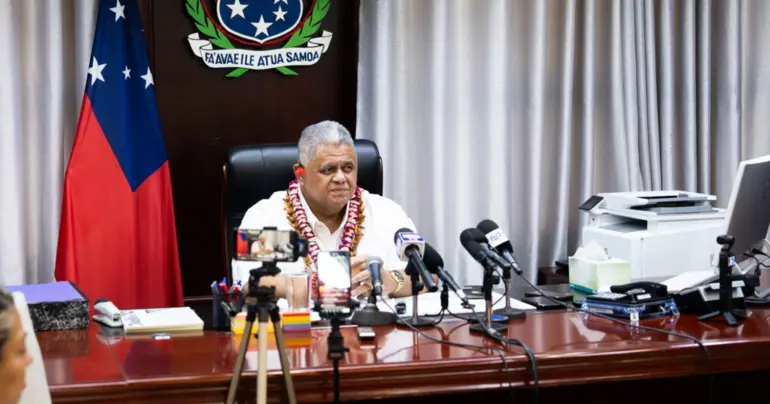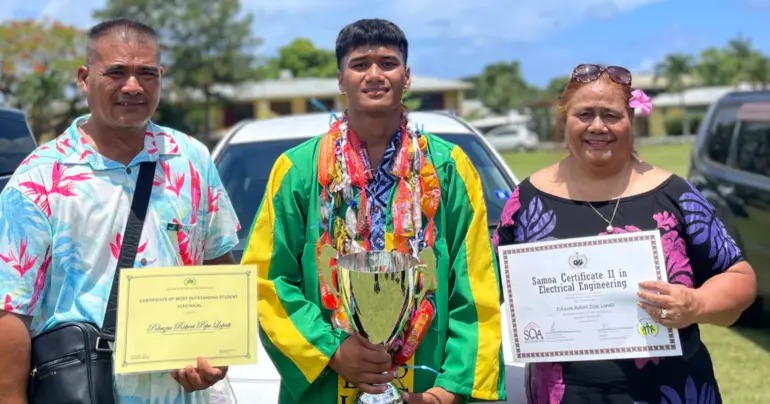Hefty fines and prison for violating protected areas
People caught fishing illegally in the newly launched marine protected areas (MPA) could face up to a million tala in fines or imprisonment.
A detailed plan to create nine fully-protected marine areas, effectively safeguarding 30 per cent of Samoa’s waters and the passage of a new law to ensure that 100 per cent of its waters will be sustainably managed by 2030, was launched last week.
The new marine protected areas will prohibit all fishing activities across some 36,000 square kilometres of ocean, the equivalent square-kilometre coverage to roughly the size of Vietnam, ensuring these waters remain completely off-limits to extractive use.
Details of the plan have been released on the very eve of the United Nations Ocean Conference in Nice, during which it is anticipated that nations from around the globe will reveal their strategies to better safeguard national waters and contribute to a growing global network of marine protected areas under the overarching banner to protect 30 per cent of the ocean by 2030.
Informally known as 30×30, the goal is one of lofty ambitions that, even combined, nations still stand woefully off track from reaching their current commitments. It’s been estimated that 85 substantial Marine Protected Areas will need to be established over the next five years if we are to effectively reach the goal of safeguarding 30% of the ocean by 2030.
Studies have shown that highly protected marine protected areas (MPAs) are more effective at restoring marine life within their boundaries. Strong protection allows ecosystems to recover and fish populations to rebound, often boosting marine life in surrounding areas through a phenomenon known as ‘spillover’.
However, and especially across Europe, governmental approach to the concept of ‘protection’ has come under fire in recent months with ocean advocacy groups and nature NGOs calling out the countries that still allow for destructive fishing practices such as bottom trawling and dredging to take place within these MPAs.
Last month, Oceana exposed the extent of such destructive fishing that was still taking place in one of the best-known marine protected areas of France – the UN Ocean Conference’s host nation this year. According to its analytical report, some 17,000 hours of bottom trawling fishing appeared to have been carried out by more than 100 vessels over the course of the last year.
Samoa’s ocean is filled with deep trenches, underwater seamounts, and coral reefs teeming with life. The new MPAs have been established to protect a place that is home to many critically endangered and endangered species, including the hawksbill sea turtle, spinner dolphins, blue sharks, and Taei’s dwarfgoby – a fish found only on Samoan reefs. It is also a migration route for humpback whales.
“Samoa is a large ocean state, and our way of life is under increased threat from climate change, overfishing, habitat degradation, and much more,” said caretaker Minister for Natural Resources and Environment Toeolesulusulu Cedric Schuster.
“This Marine Spatial Plan marks a historic step towards ensuring our ocean remains prosperous and healthy to support all future generations of Samoans, who will rely on the ocean like us and as our ancestors did.”
The new law is the country’s latest effort to protect its ocean. Back in 2003, Samoa was one of the first countries to declare its ocean a sanctuary for sharks, turtles, whales, and dolphins. The nine new MPAs are, however, the first that Samoa has created beyond its reefs. The MPAs now ban activities that could harm marine life or damage marine habitat, including fishing, mining, and drilling. Coral reefs cannot be disturbed, so artificial reefs cannot be installed in these areas. Those found illegally fishing could face fines up to one million tala or imprisonment.
The plan will now integrate traditional management systems by incorporating existing nearshore community-managed areas such as Fish Reserves and District MPAs, ensuring these culturally important practices are preserved and strengthened. Traditional knowledge and the best available science, together with input from stakeholders from across 185 communities, have each guided and shaped the new plan.
Dr Kathryn Mengerik, executive director of the Waitt Institute, has acknowledged Samoa’s leadership and the significance of this achievement in the global context.
“Samoa has established itself as a leader in sustainable ocean management. We are proud to support Samoa’s visionary leadership and decisive action towards securing a healthy ocean, thriving communities, and a prosperous future for its people and the planet.”
The legal establishment of Samoa’s Marine Spatial Plan comes ahead of the United Nations Ocean Conference taking place in France. The conference, aptly themed “Accelerating action and mobilising all actors to conserve and sustainably use the ocean”, will provide a platform for Samoa to inspire countries across the globe.
Kevin Chand, the senior director of Pacific Ocean Policy at Pristine Seas, said: “On the eve of the UN Ocean Conference, Samoa has successfully protected 30 per cent of its ocean. This is a notable achievement, given that Samoa has one of the smallest Exclusive Economic Zones in the Pacific.
“Samoa joins a pioneering set of countries that have achieved the goal of protecting at least 30 per cent of their ocean. At the UN Ocean Conference, all eyes should be on the many Pacific leaders attending. Their ambition and dedication to ocean protection can serve as inspiration to all countries seeking to achieve 30×30.”











